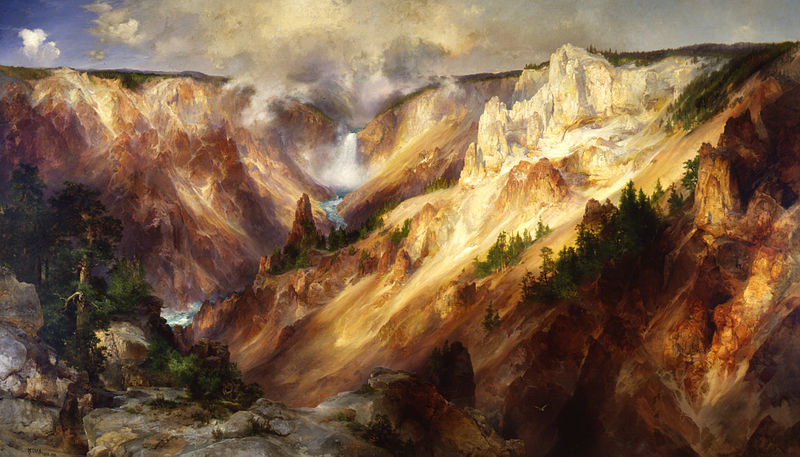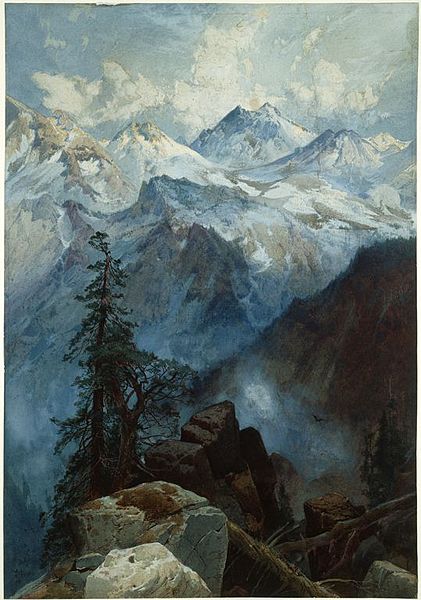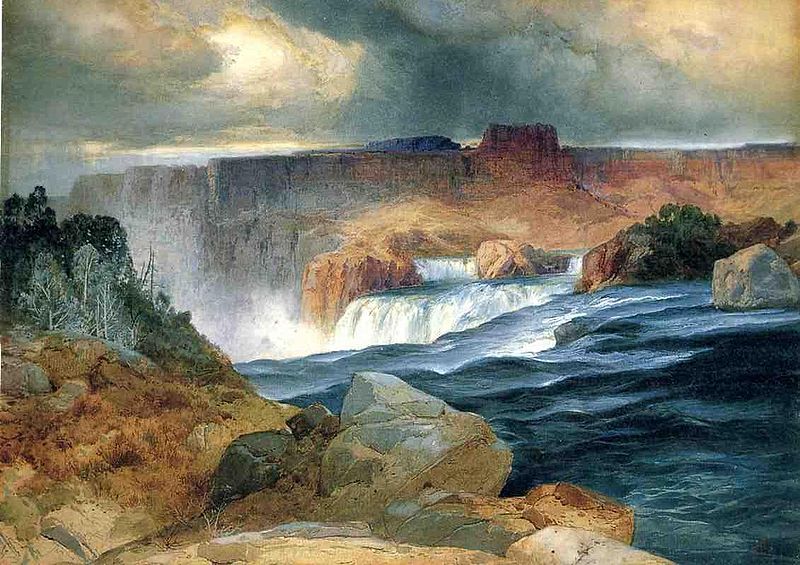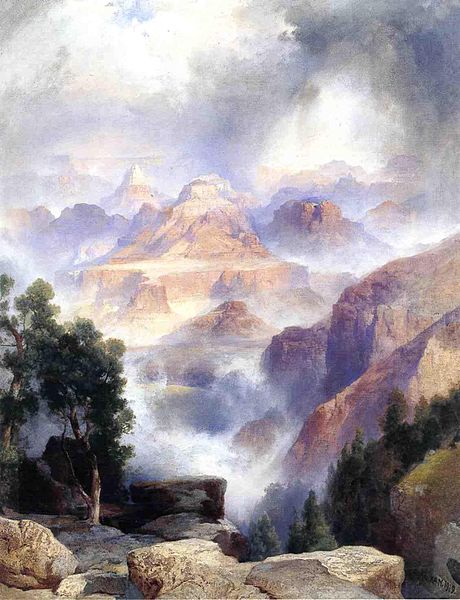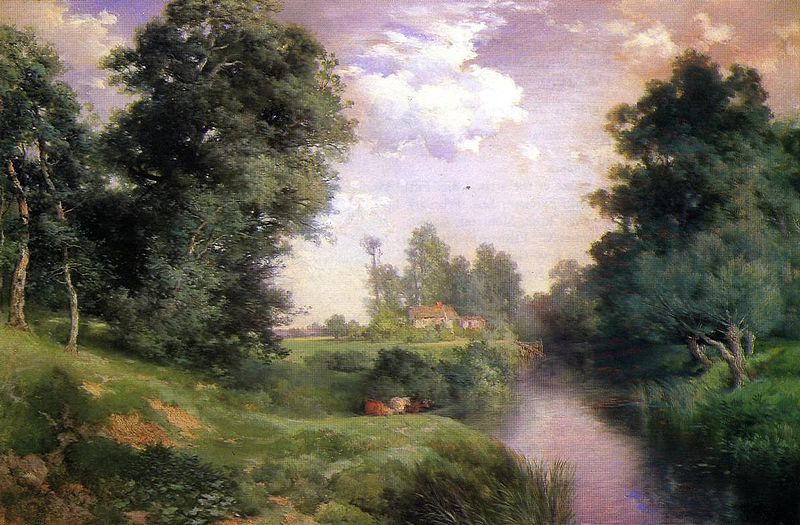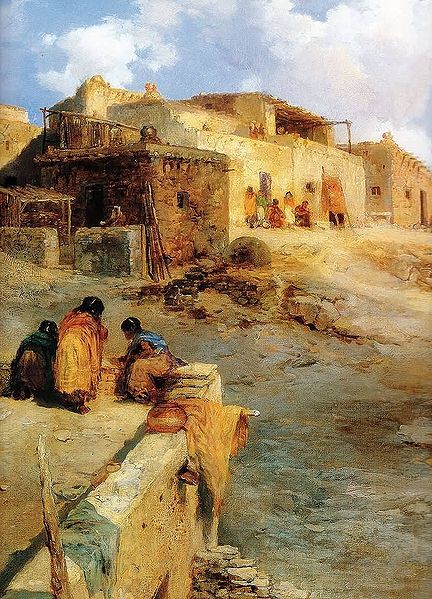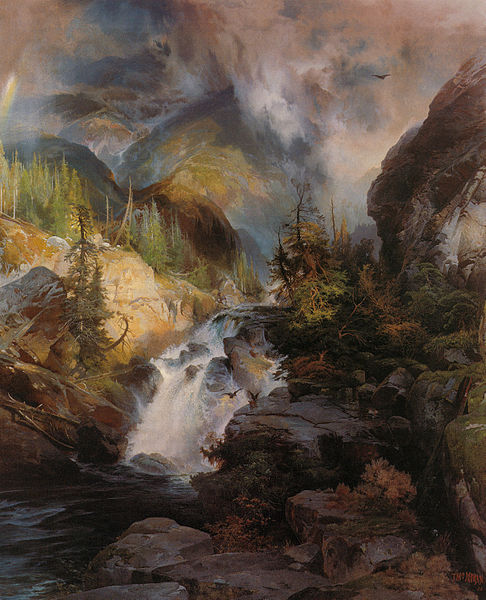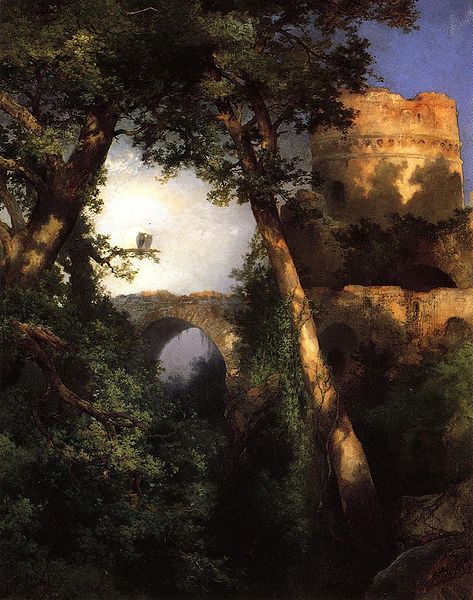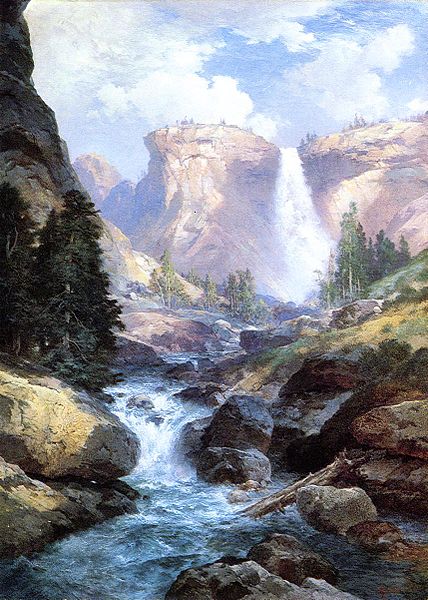<Back to Index>
- Painter Jervis McEntee, 1828
- Painter Thomas Moran, 1837
PAGE SPONSOR
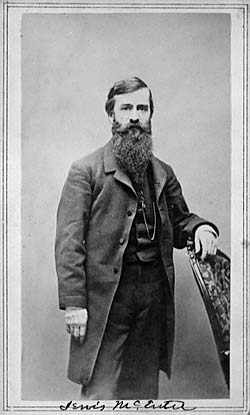

Jervis McEntee (July 14, 1828 – January 27, 1891) was an American painter of the Hudson River School. He is a somewhat lesser known figure of the 19th century American art world, but was the close friend and traveling companion of several of the important Hudson River School artists. Aside from his paintings, McEntee's detailed journals are an enduring legacy.
McEntee was born in Rondout, New York, on July 14, 1828. Little is known of his childhood. He exhibited his first painting at the National Academy of Design in New York City in 1850. The following year he apprenticed with Frederic Edwin Church, who was then regarded as a rising star in the American art world. Church and McEntee remained lifelong friends, though McEntee never approached Church's fame and fortune. After studying with Church, McEntee engaged in business in Rondout. This he relinquished after three years, and, opening a studio in New York, devoted himself thenceforth wholly to art.
The landscapes of Jervis McEntee are known for their melancholy and poetic mood. The sky is often cloudy in a McEntee landscape, the season autumn. While Jasper Francis Cropsey and other artists typically painted bright fall foliage, McEntee often captured the season near its end, with the leaves faded and falling from the trees. "Some people call my landscapes gloomy and disagreeable," McEntee wrote in his journal, "They say I paint the sorrowful side of nature . . . But this is a mistake . . . Nature is not sad to me but quiet, pensive, restful."
McEntee was a particularly close friend of Hudson River School artists Sanford Robinson Gifford and Worthington Whittredge as well as figurative painter Eastman Johnson. He was made an associate of the National Academy of Design in 1860, and a full academician in 1861. In 1869 he visited Europe, painting much in Italy. He died on January 27, 1891 of Bright's disease and is buried in Montrepose Cemetery in Kingston, New York.
Aside from his paintings, McEntee's enduring legacy are the detailed journals he kept from the early 1870s until his death. In his writings McEntee records a detailed account of Hudson River School artists, their day - to - day life, gossip and personal reflections, and the overall arc of the American art world in the second half of the 19th century. He discusses his artistic successes and trials, particularly as money becomes more scarce with the decline in popularity of Hudson River School art.
McEntee's journals are now kept by the Archives of American Art, a research center within the Smithsonian Institution. Five volumes of these diaries, from 1872 to 1890, have been digitally scanned, transcribed, and can be browsed in their entirety in the Jervis McEntee Diaries Online.
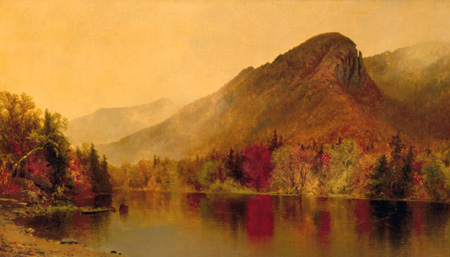
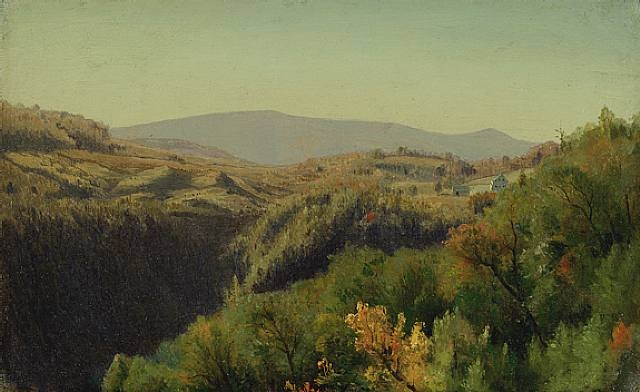
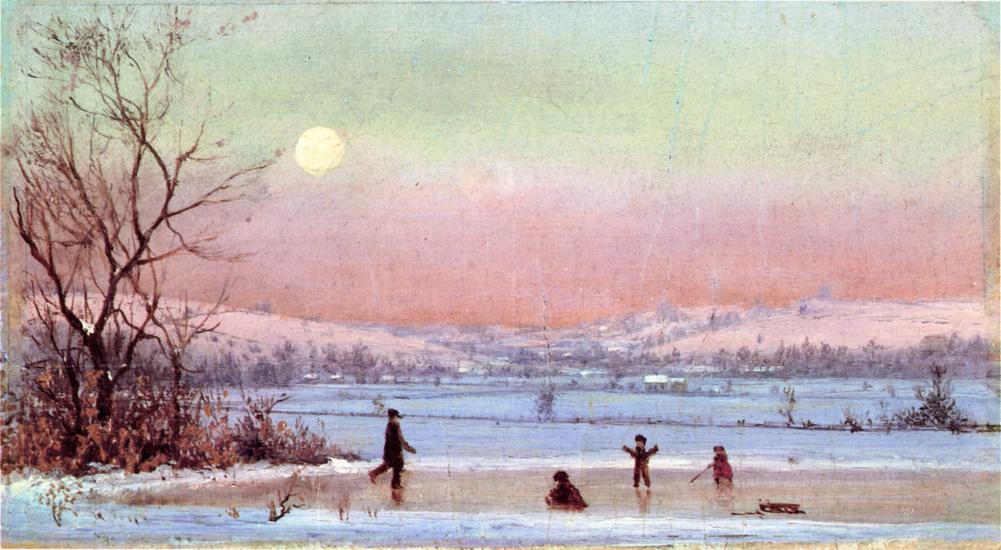
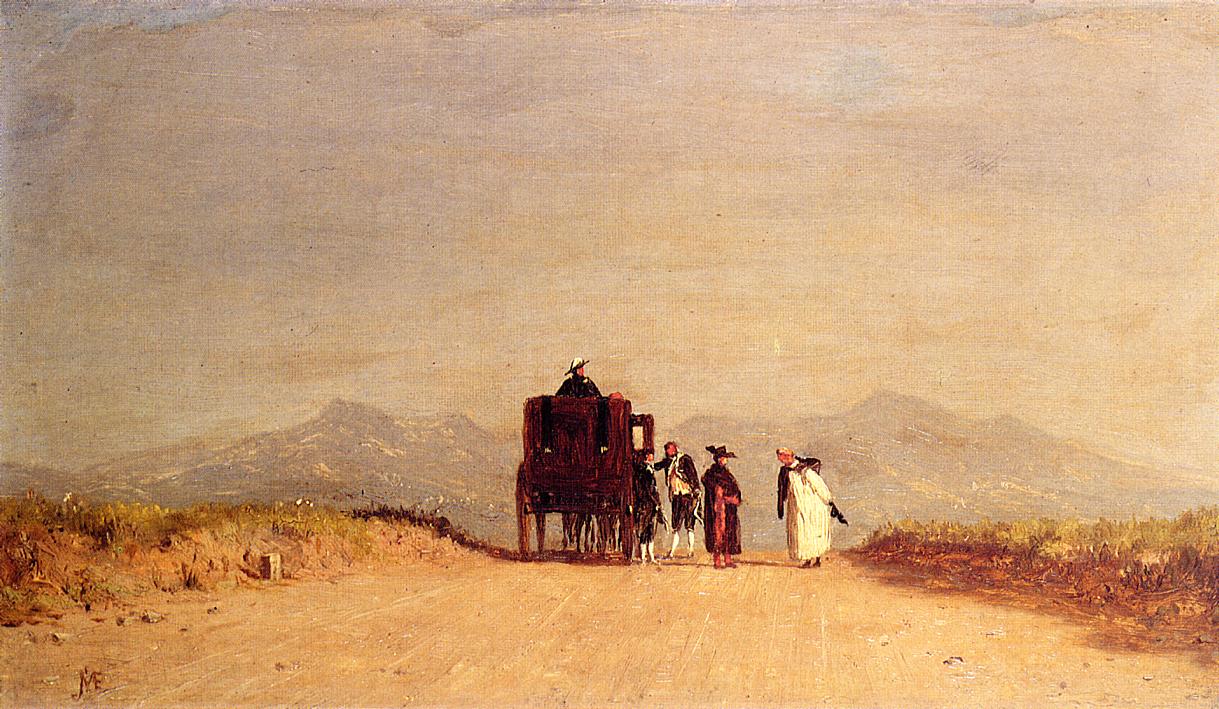
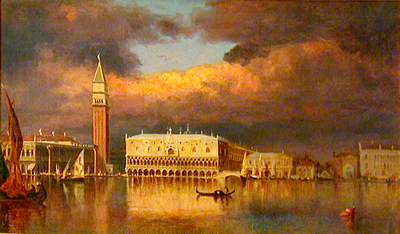
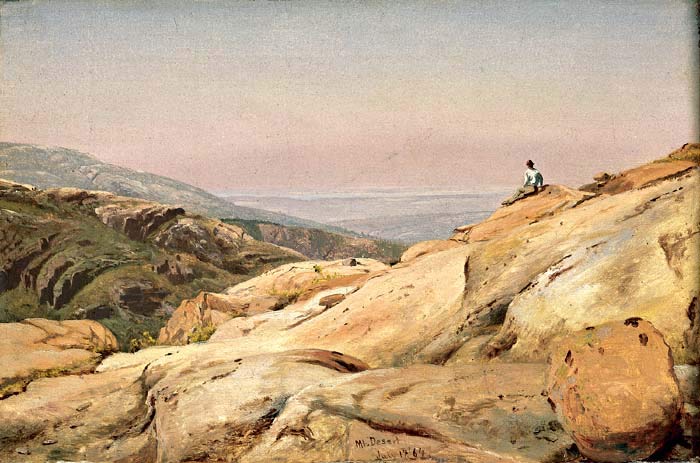
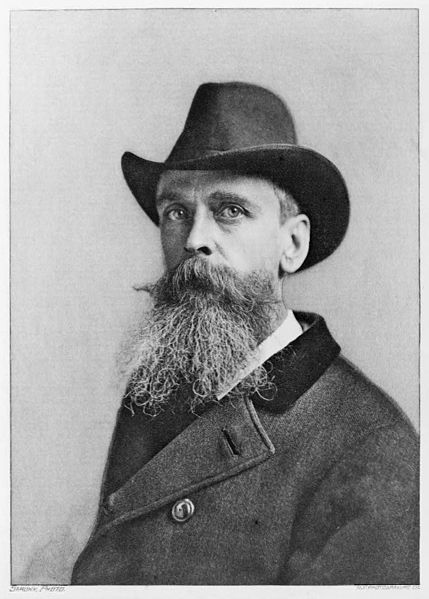
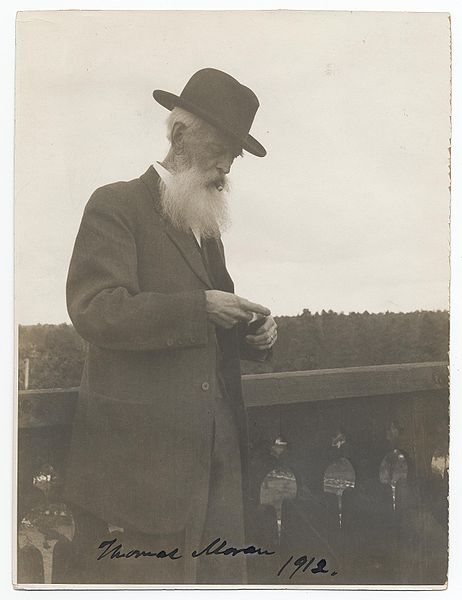
Thomas Moran (February 12, 1837 – August 25, 1926) from Bolton, England, was an American painter and printmaker of the Hudson River School in New York whose work often featured the Rocky Mountains. Moran and his family took residence in New York where he obtained work as an artist. A talented illustrator and exquisite colorist, Moran was hired as an illustrator at Scribner's Monthly. During the late 1860s, he was appointed the chief illustrator of the magazine, a position that helped him launch his career as one of the premier painters of the American landscape.
Moran along with Albert Bierstadt, Thomas Hill and William Keith are sometimes referred to as belonging to the Rocky Mountain School of landscape painters because of all of the Western landscapes made by this group.
Thomas Moran began his artistic career as a teenage apprentice to the Philadelphia wood engraving firm Scattergood & Telfer. Moran found the engraving process "tedious" and spent his free time working on his own watercolors. By the mid 1850s he was drawing the firm's illustrations for publication rather than carving them and he began studying with local painter James Hamilton who introduced him to the work of British artist J.M.W. Turner. Moran traveled to England in 1862 to see Turner's work and he often acknowledged that artist's influence on his use of color and choice of landscapes. During the 1870s and 1880s Moran's designs for wood engraved illustrations appeared in major magazines and gift oriented publications.
Moran was married to Scottish born Mary Nimmo Moran (1842 – 1899), an etcher and landscape painter. The couple had two daughters and a son. His brothers Edward (1829 – 1901), John (1831 – 1902) and Peter (1841 – 1914), as well as his nephews Edward Percy Moran (1862 – 1935) and Jean Leon Gerome Ferris (1863 – 1930) were also active as artists. He died in Santa Barbara, California, on August 26, 1926.
Thomas Moran's vision of the Western landscape was critical to the creation of Yellowstone National Park. In 1871 Dr. Ferdinand Hayden, director of the United States Geological Survey, invited Moran, at the request of American financier Jay Cooke, to join Hayden and his expedition team into the unknown Yellowstone region. Hayden was just to embark on his arduous journey when he received a letter from Cooke presenting Moran as.. "an artist of Philadelphia of rare genius." Funded by Cooke (the director of the Northern Pacific Railroad), and Scribner's Monthly, a new illustrated magazine, Moran agreed to join the survey team of the Hayden Geological Survey of 1871 in their exploration of the Yellowstone region. During forty days in the wilderness area, Moran visually documented over 30 different sites and produced a diary of the expedition's progress and daily activities. His sketches, along with photographs produced by survey member William Henry Jackson, captured the nation's attention and helped inspire Congress to establish the Yellowstone region as the first national park in 1872. Moran's paintings along with Jackson's photographs revealed the scale and splendor of the beautiful Yellowstone region more than written or oral descriptions, persuading President Grant and the US Congress that Yellowstone was to be preserved. Moran's impact on Yellowstone was great, but Yellowstone had a significant influence on the artist, too. His first national recognition as an artist, as well as his first large financial success resulted from his connection with Yellowstone. He even adopted a new signature: T-Y-M, Thomas "Yellowstone" Moran. Just one year after his introduction to the area, Moran captured the imagination of the American public with his first enormous painting of a far - western natural wonder, The Grand Canyon of the Yellowstone, which the government purchased in 1872 for $10,000. For the next two decades, he published his work in various periodicals and created hundreds of large paintings. Several of these, including two versions of The Grand Canyon of the Yellowstone (1893 - 1901 and 1872) and Chasm of the Colorado (1873 – 74) are now on view at the Smithsonian American Art Museum).
Over the next forty years Moran traveled extensively. He went back to Yellowstone with Jackson in 1892. They were invited by Elwood Mead, the state engineer of Wyoming, in preparation for a "Wyoming Exhibition" at the World's Columbian Exposition. Thousands of tourists were now able to visit the park, arriving by the Northern Pacific Railway, and Moran and Jackson were able to take advantage of the tourist facilities, such as a hotel at Mammoth Hot Springs. Moran wrote "After a day at Norris we left for the Grand Canyon where we stayed two days and made a great many photos. I saw so much to sketch that I have determined to return there myself after I have been to the Geyser Basins and the lake and spend a week at work there. It is as glorious in color as ever and I was completely carried away by its magnificence. I think I can paint a better picture of it than the old one after I have made my sketches." Moran sketched many more images of the Canyon on this trip than he had in 1871, including views from the viewpoint named for him on the 1871 trip, "Moran Point."
Moran was elected to the membership of the National Academy of Design in 1884 and produced numerous works of art in his senior years.
